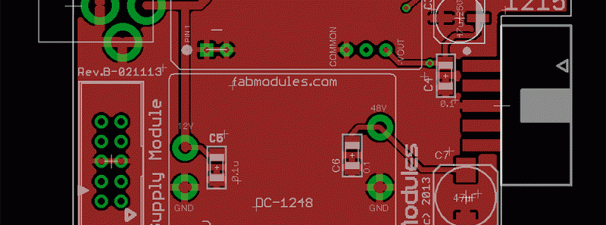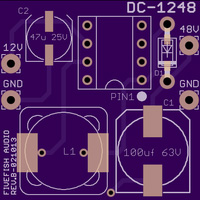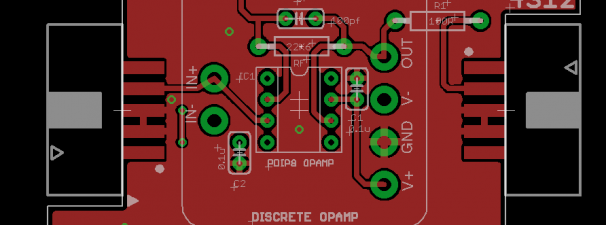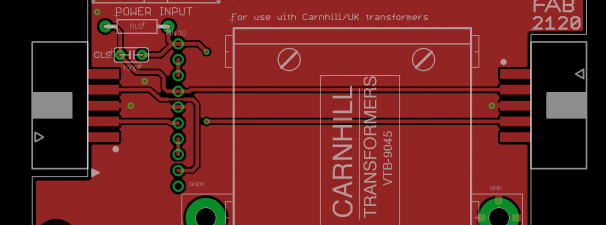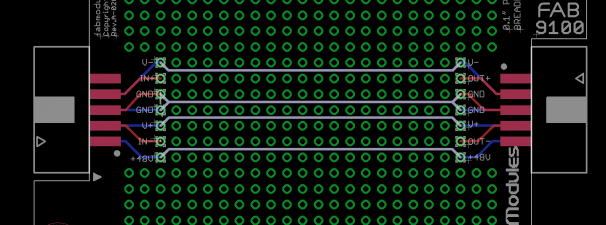The FAB4312 is a standard Non-Inverting Amplifier using OpAmps, accommodating both the PDIP8 IC format, and the API 2520-footprint Discrete OpAmp format.
If you’ll be installing a Discrete OpAmp, MillMax sockets are required to be installed on the board. An external connection, RGAIN, is required to control the gain of this amplifier. One typically uses a 10K or 22K Reverse Log Potentiometer for RGAIN in this circuit configuration.
Feel free to change the values of RF, RGAIN and R3 to suit your purpose. The formula for Voltage Gain for the amplifier is conveniently printed on the FAB Module.
For CF, we’re using a 100pf C0G NPO ceramic capacitor. You may have to adjust this capacitor value to suit the OpAmp you’ll be using in case you encounter instability or oscillations.
In addition, a trimmer resistor (R2) is provided to let you adjust DC Offset Voltage as close as possible to 0 Volts. By adjusting the DC offset to as little as possible, you reduce clicking noise when changing gain settings. This may not be an issue if you’ll be using a potentiometer for RGAIN, but if you’ll be using a selector switch to vary the value of RGAIN, then you’d want your DC offset as small as possible.
Continue Reading…

